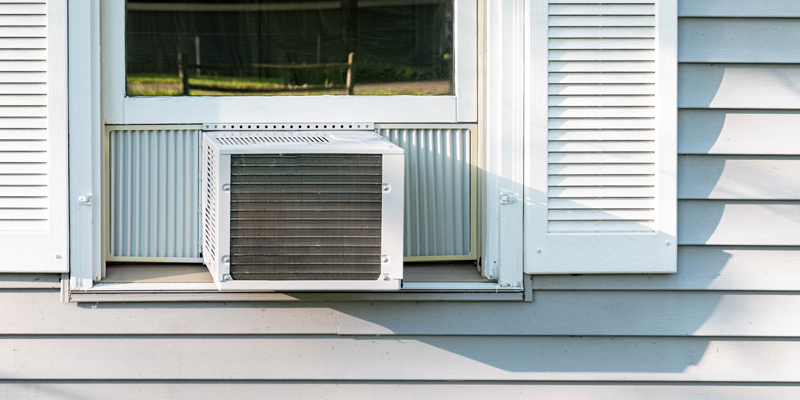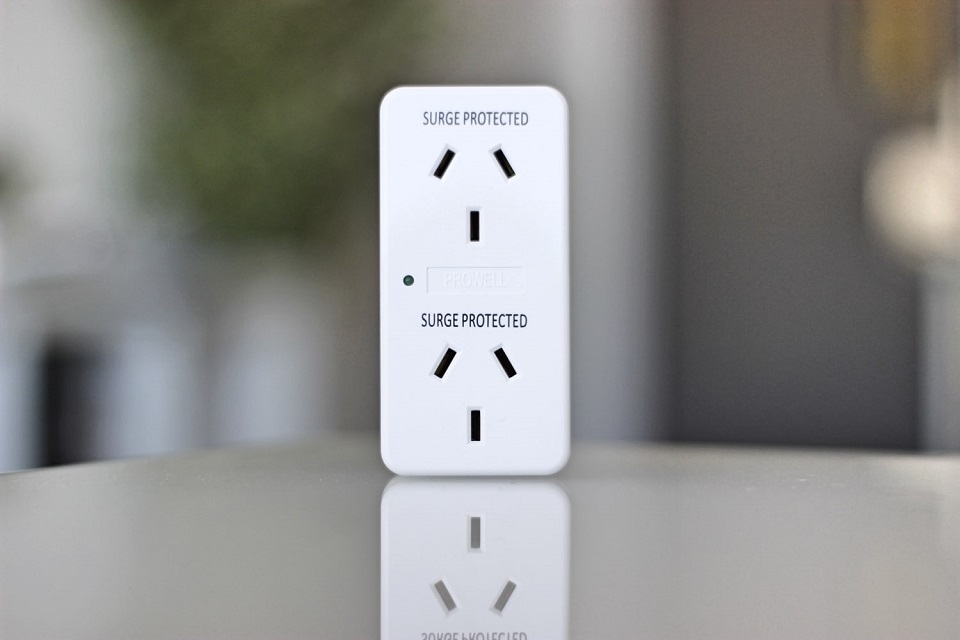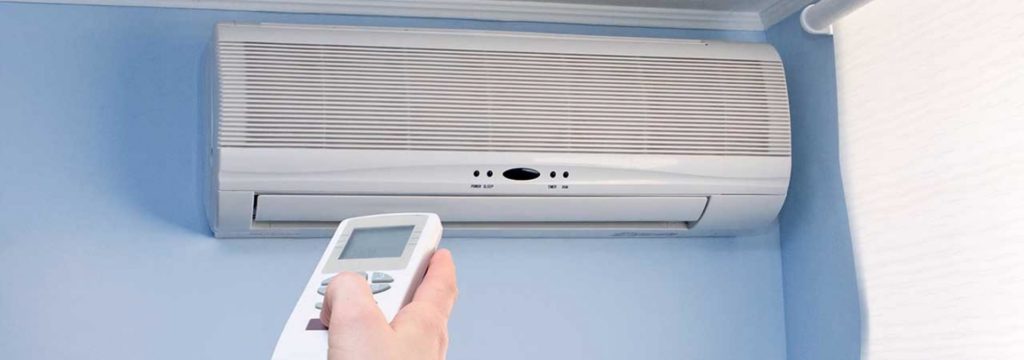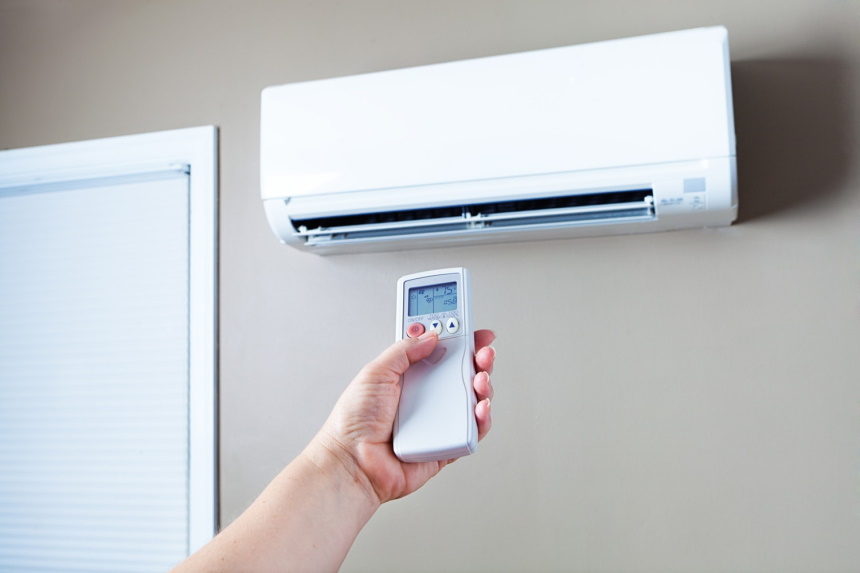

What makes a high-quality HVAC Multimeter? Is it the resistance, continuity, capacitance, and voltage readings? Well, those factors are important, but they are not all that are required. Many people ask the question “what is the best HVAC multimeter that I can buy?”, but as we have seen above, there are so many factors that combine to help you decide on the best one for you.
There are so many options available on the market right now. Not all the top-rated models are as good as they are described. We realize this, and that is why we have come up with this post. In creating this list, we considered factors such as voltage AC/DC, display, storage temperature, and temperature, among others. Each of these is very important. For example, the display shows you all the important parameters to consider. The temperature will also affect the effectiveness of the multimeter. With these in mind, let us now find out the best units available on the market today with the help of a buying guide and product reviews.
This unit combines safety and accuracy to give you one of the best options in this category. It comes with several useful features, including a built-in double fuse and auto-power shut down when not in operation. Additionally, it comes with a large bright display that allows you use it in various circumstances.
Our review of the best HVAC multimeter starts off with this highly versatile and reliable unit from Crenova. The brand is relatively popular, and we are not surprised to find this unit on this roundup.
As a multimeter from this brand, it comes in a small, compact size that makes it pretty easy to carry around. It is also quite lightweight. Thus, you’ll find it a handy companion even in tight spots. This also means that you can use it in different settings without any issues.
Apart from the compact and lightweight build, it is also quite durable. This is down to the detachable rubber covering on the housing. Due to this design, the multimeter can survive drops and falls without plenty of damage. Another design feature is the folding stand at the rear. You can thus keep the device propped as you handle your business.
Performance-wise, you will not be disappointed by this unit. It helps you to achieve accurate testing and electrical measurements. With the standard probe, you can easily get all the readings that you want.
Furthermore, since this model is an auto-ranging unit, you do not have to go through the stress of setting it up yourself.
It features a relatively large 3.5” display that allows you take readings at various times of the day.
If you want a reliable and versatile unit, then look no further than our top pick.
This model allows you to accurately and safely gauge DC, diode, and other things. It is a very versatile unit that comes with a large LCD display that allows you to see even in lowlight conditions. It is fast and comes with several safety features as well.
If you are a professional, then we strongly believe that you will feel right at home using this particular unit. Considering the slew of features embedded in it, this unit offers far more than several other options in its category. One of the best things about it is that it comes from a highly reliable and popular manufacturer.
Why do many professionals so highly rate this unit? Let’s see.
First of all, you will discover that this unit comes with true RMS readings. This is important, especially for professionals, because it is the most accurate form of readings that you can find right now. It is also highly rated because it features auto-range detection. Now, with this model, you can automatically configure settings. Amateurs and DIY enthusiasts will find this particularly useful. However, most professionals prefer to do their work manually, and this model also offers manual range detection for such users.
This unit features a versatile set of probes and sensors. We observed that it comes with the standard leads and a temperature sensor. Additionally, you will find that it comes with a lead adapter. This multimeter automatically sets the range. In normal circumstances, you would have to connect the meter to the resistor and manually begin to search until you get the range that you want. Well, with this unit, that problem disappears. Instead of manually searching, it does all that for you. Therefore, it is very easy to use and super-handy.
The features above can be found in some highly rated units as well. What truly sets this model apart from the rest are the ‘bonus’ features. For one, it comes with a hanging magnet. That way, you can hang it on metal surfaces while you work. The ceramic fuses also offer you good overload protection. Lastly, there is a versatile socket that you can use in testing your diodes and transistors without plenty of hassle.
This model is an accurate and mobile multimeter that comes with, among other things, a carry pouch. It does the basic work you’d expect from a multimeter including but not limited to, measuring resistance, voltage, and current. It is fast and accurate and comes at a very attractive price.
This unit is a sturdy multimeter great for everyday use. It comes with the standard ranges as well as other important inputs. It has the ability to safely and correctly diagnose faults in your home, car audio, circuit boards, and so on. It should be noted though, that it is only great for light-duty work. If you use it for heavy-duty work, you will likely end up disappointed.
It is a manual range selector. Therefore, you will have to switch to higher values if you want to make measurements. Nevertheless, it is an awesome tool for testing continuity, diodes, and circuits. With an accuracy of 1%, it is a real bargain.
The display is one reason why many folks in the industry recommend this unit. It is clear and attractive. Additionally, it refreshes up to three times in one second. Other parts of the panel come in handy and easy to use. For example, there is a large dial with buttons that are clearly marked and easy to use. It should be noted though, that if you are a beginner, it can be a bit confusing at first. However, once you get the hang of the whole thing, it turns out pretty easy to use.
While this is a relatively cheap unit, it certainly doesn’t feel cheap. It comes in a design that rivals even some more expensive models on the market. For instance, there is a rubber sleeve to protect from impacts. There is also overload protection of up to 200mA.
We highly recommend this multimeter for professionals looking for a backup unit. We also believe that DIY enthusiasts will like using it around the home.
If you are looking for a model that you can carry around with you easily, then look no further than this portable and lightweight unit. It comes with auto range selection and features that can help to eliminate damage during use. It is easy to use as well, coming with an easy-to-understand interface and durable housing.
As you head out to the market looking for an HVAC multimeter, you are likely on the lookout for a unit that comes with automatic ranging. Well, that is just one of the benefits that come from using this model. This unit affords you the luxury of automatically setting up your device. Therefore, if you are a novice in this aspect, it will be of plenty assistance.
Another reason why we love this unit is that it comes with an accurate read-out scale. With a multimeter, a general rule of thumb is that the more numbers that you can read from the display, the better. Thankfully, this unit should satisfy you in this regard. This particular device is very precise and can give you readings up to three decimal places. The overall range is very impressive and useful.
Since you will be testing different types of electronics with this device, it stands to reason that it should come with different leads. Well, this device comes with standard probes that add a level of versatility.
Well like this model for these reasons. We like the 3.5” LCD screen and the protective casing that it comes with. A unique feature of this is also that the screen can continue displaying your reading until you can save it down.
If you are looking for a model that you can carry around with you easily, then look no further than this portable and lightweight unit. It comes with auto range selection and features that can help to eliminate damage during use. It is easy to use as well, coming with an easy-to-understand interface and durable housing.
This multimeter is an excellent unit that professionals will find really handy. When choosing an HVAC multimeter, one of the factors that we consider is the counts. Well, this unit offers 4000 counts. The higher the number, the better. While others offer higher counts than this unit, we believe that it is sufficient to suit most tasks.
This particular model is a highly accurate model that even offers you true RMS and refreshes up to thrice every second. This combination of features results in a multimeter that can monitor minute fluctuations in the system under consideration. Therefore, regardless of what you are testing, you can rest assured of accurate results.
Design-wise, it comes in a typical multimeter size. The display is large enough to provide you with clear reading, and it is aided by the useful backlit.
With auto shutoff, your batteries will run for longer. It also comes with impressive overload protection.
One problem that is usually encountered when using an HVAC multimeter is the display. It can be hard to read at times. Thankfully, this unit comes with the best display we have seen. The large LCD display allows users to see the values on the screen easily. Furthermore, it is great to use for range measurements and voltage readings.
While most of the options that have been reviewed on this roundup are mainly designed for professionals, the Firldpiece is mainly created for beginners. If you are just starting out, chances are very high that you will fall in love with this option.
First, it comes with a nice design and offers excellent ease of use. If you are using it for HVAC, you will really like the reliability and overall accuracy that it delivers. From frequency to temperature, and other parameters, this unit will surely satisfy your requirements.
One of the features we love is the non-contact voltage detection. This particular design feature is great if you use the model every day or occasionally. Testing for voltage is pretty straightforward using this model.
If you are looking for an auto-ranging model, then you will have to look elsewhere. The Fieldpiece supports only manual ranging. While professionals will find this easy, amateurs and beginners might have a hard time. Fortunately, the user manual is quite explicit and straightforward.
Design-wise, it is somewhat different from what you might be used to. It offers a slimmer and longer design. However, we believe that you will get used to it quite quickly. This unique design is great since it allows you to use the device with one hand.
This model comes with data holding. This means that you can store your last reading. This surely comes in handy plenty of times.
This unit is an excellent choice if you want a model that wouldn’t die on you as you work. It comes with a large battery that can last for extended periods. Aside from the impressive battery life, it also delivers accurate measurements and does so very quickly. It also features safety precautions that will keep both you and the device safe.
We love that this model offers the ability to make readings and trends outside the arc blast zone. You also get basic features like continuity, frequency and resistance measurements. The device can read.
Design-wise, it comes in a typical multimeter size. The display is large enough to provide you with clear reading, and it is aided by the useful backlit.
Due to the auto power-off feature, you can use this device for longer. It helps to conserve battery life.
This unit is all you need when making your electronic measurements. It is an excellent choice that is suited for a wide variety of applications. With plenty of certifications, it is very safe and is handy when troubleshooting various electrical issues. Furthermore, it comes in a sturdy, protective cover that ensures durability.
While the design and build of this unit is admittedly not as robust as that found on other units, it is still good enough for general use. It comes in a lightweight, compact design that is great for home use and light-duty applications. The design includes side-mounted lead holders, a cord hook, and a stand that allows you to use the model without carrying it.
One of the main appeals of this unit is the display. We observed that this model comes with large, clear units and overall display. While it is not backlit as many of the best units we have reviewed so far; it is still great enough for general use. All the labels on the unit are properly labelled. It also comes with several parameters that will contribute to the smooth operation of the multimeter. For instance, you will find that it comes with a battery indicator.
Performance-wise, it is an admirable unit. It features a trio of jack sockets. Aside from these, it features auto-shutoff, respectable reaction time, and much more.
It features a rubber holster that is sure to keep the unit safe throughout use. Internally, there is overload protection.
We highly recommend this unit to amateurs and DIYers that like to work around the home or that work in the automobile industry. This unit is also excellent for anyone working on batteries and computers.
In the reviews above, we discussed the features of 8 of the best HVAC multimeters on the market today. Considering these products can help to narrow down your choices. Therefore you can make better buying decisions. However, we know that this short list might not satisfy you. To that end, we have created this buying guide section. In this section, we will consider several information, including the important factors that can help you in buying the correct product for your needs.
Multimeters are also referred to as multitesters and VOMs. They are excellent tools that every electrician and HVAC technician must own. These devices are electronic tools or instruments that measure different parameters or units.
Some of the most popular parameters they are used in measuring include resistance, current, and voltage.
A multimeter comes in a compact, lightweight design that makes it easy to handle. This handheld device can either be a digital option or an analog instrument.
First, the digital multimeter comes with a display that shows the values of the parameters in digits. The models we reviewed in this article come in this form. They offer an LCD screen that is easy to read.
On the other hand, analog multimeters utilize a macro meter, and show readings view a needle on a dial. It is usually more difficult to read for the uninitiated.
The ease of usage is largely dependent on your level of expertise and the model of multimeter that you have available.
At the base level, the two options that we reviewed work using similar principles. The unit often comes with a trio of ports and a red and black lead.
To get your readings, you will have to plug the black lead into your common port while the red lead can be put in either of the remaining ports.
One thing that you should note before you begin is to ensure that the circuit being tested doesn’t come with a higher voltage value than what your multimeter can handle.
Once the connectors are made, you can use your knob or dial to choose the multimeter mode. The modes are often pretty clear to see on the multimeter for you to choose from.
Reading your unit can be easy or complicated. It is usually easy if you have previous experience using the tool and can be complicated if you are just starting out with using the device. However, with regular use and seriousness, you can be an expert reader.
First, you should note the values and units on the multimeter that you must understand.
One of such values is the “V”. This value is usually on the dial or knob, and it means voltage. For an analog unit, the V is often surrounded by different values. These show the voltage that you want to test.
On the other hand, if you want to test for current, you should look out for the “A”. A denotes amperes. Measuring it is quite straightforward. All you need to do is to look for the omega symbol on your device. Once this is active, you can start reading current values.
If you are just starting out, we highly recommend that you purchase a digital multimeter such as the Crenova MS8233D. Why? Well, digital models give you a definite value and are overall better to use.
An analog tester will also give you accurate values, but it is easy for these values to get lost in translation. You might have a hard time reading the values, especially if you are a beginner.
Overall, whether a beginner or a professional, we believe that you would appreciate the ease of use offered by a digital unit.
The HVAC multimeter in several ways is similar to a normal multimeter. However, there are certain differences.
The main difference between the two is that the ranges that you can read on an HVAC multimeter are much higher than what you would normally obtain on other types of multimeters.
Additionally, HVAC multimeters are far more durable than other types of multimeters. It comes with rubber gloves and parts that not only make it easier to handle, but also means that it can survive drops, bumps, and falls.
Another difference is the price. Considering the two factors that we considered above, it is not very surprising that the HVAC multimeter is more expensive than other options.
Let’s see some of these differences in more technical terms.
For instance, the screens of these units come with backlit displays. Therefore, you can use it in different conditions regardless of the light conditions.
The HVAC meter also comes designed with clamps. These clamps come in super-handy. They make it very easy to read loads. All you need to do is the clamp your clamp, well around the wire. This way, you will jettison the need for leads.
Another feature of these units is that they have LED lights and temperature probes.
As you can see, an HVAC multimeter is one of the best electrical measuring devices that you can get right now.
Here are some of the main benefits of these units.
The HVAC multimeter comes with an automatic display that will make it so much easier to take readings. It relays the information into easily understood values on an LCD screen. While others might come with needles and such-like indicators, they are not usually easy to read except you are a professional. Furthermore, the display means that you can use it even in low-light conditions.
An HVAC multimeter offers you accurate readings, more than your other types of multimeters. Some of the units can give readings of up to three decimal places.
Since your HVAC system is usually connected to 220V lines, you need a unit that can handle such power. Thankfully, these models can handle high levels of power without issues.
Your HVAC multimeter can handle negative values without much hassle.
There are several factors that you should consider when buying your multimeter. Now let us see some of the most important information that can help you.
There are several types of multimeters on the market. Getting the best multimeter requires choosing the right type. Let’s see the types available.
This type of multimeter is, as the name implies, essential if you have an HVAC system. Your air conditioning unit and heating systems do not run on the regular lines. They are always installed on 220 v lines. Therefore, you must have the correct device that can handle the power from these electrical lines. Choosing the wrong multimeter will result in inaccurate readings and can even result in damage.
These models often come with a thermocouple probe. For example, the AstroAI Digital Multimeter, TRMS is an excellent device that can handle plenty of power without damage, expect you plug it in the wrong way.
Aside from damage to the device, using the wrong unit on a 220-V line can even result in electrocution.
This is another type of multimeter. As the name implies, this type of multimeter automatically sets the range.
In normal circumstances, you would have to connect the meter to the resistor and manually begin to search until you get the range that you want.
Well, with this unit, that problem disappears. Instead of manually searching, it does all that for you. Therefore, it is very easy to use and super-handy. An example of this type of multimeter is the INNOVA 3320.
This unit can be said to be the opposite of the automatic ranging multimeter. In this case, you will connect the multimeter to the resistor and manually search for the range. It offers you a greater level of control than usual. Therefore, professionals find it very handy. One example of this type of multimeter is the Etekcity Digital Multimeter MSR-R500.
The Fluke models are units that are designed to withstand adverse conditions without breaking down. They are made from high quality and durable materials that ensure their consistent durability.
With these units, you can check batteries as well as carry out a wide variety of other tasks. They are often immune to weather and hazardous conditions.
One way that they are used in dangerous circumstances. You can place this type of multimeter at a distance and take readings to your phone or other devices.
This is the anti-thesis to the digital multimeter. It comes with a needle or pointer that shows the value of your unit under consideration. They are very versatile and can measure various parameters from resistance to voltage and duty cycle.
As the name implies, this model comes with a digital display. The display, usually, LCD, shows you the values of your measurement.
They are the simplest types to read on the market today.
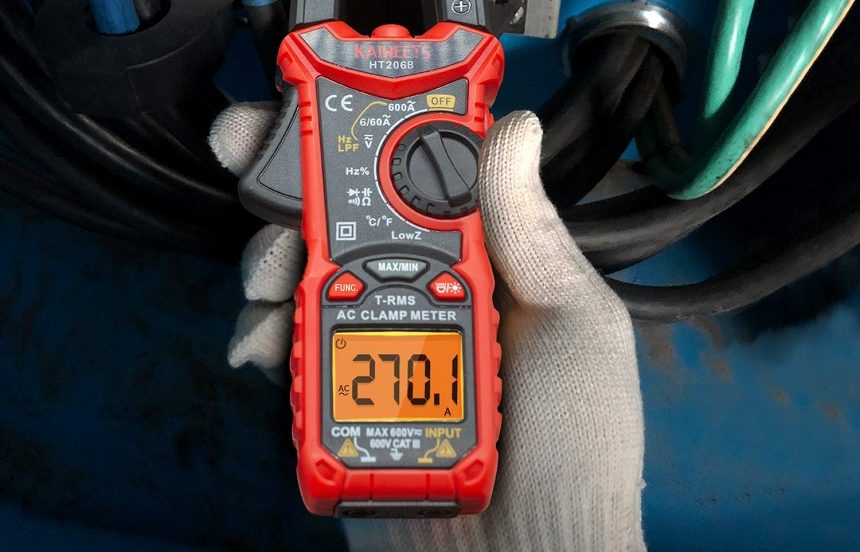
One of the most important parameters to consider when choosing an HVAC multimeter is the range limit. Since you have not carried out any measurements, you might have no idea about the parameters your project will demand. That is why it is important to get a model with plenty of range. In other words, your HVAC multimeter should be able to handle your current and future tasks.
There are certain recommended ranges.
If you are testing for current, we recommend from 10uA to up to 10A.
Since resistance is another important parameter, we also recommend that you get a model that offers a range from 10 ohms to up to 20 mega-ohms.
If you are checking for voltage, then your model should be able to handle between some millivolts to up to 650 Volts. The KAIWEETS Digital Clamp Meter T-RMS offers up to 600 volts which we found to be quite satisfactory for most tasks.
If you are not a professional, you might find this to be a strange parameter. However, it is one of the most important features to consider when choosing a multimeter. The input resistance refers to the resistance that builds in the multimeter, when it connects across the probes of your device.
As a rule of thumb, the higher the value of the IR, the better the HVAC multimeter. While you cannot go around checking for the value of each model on the market, you should consider a value of 1 mega-ohm to be a good indicator that you have a quality model.
Since you are meticulous about your work, you will likely want the most accurate reflection of the parameters. While some might not consider it to be very important, any electrician worth their salt knows that accuracy is vital.
To determine the accuracy, the number of counts is handy. If your device falls between 4000 to 6000 counts, then it will give you accurate results. The Fluke 116/323 KIT HVAC Multimeter is one of the most accurate on our roundup. It gives you up to 6000 counts.
If your device offers you true RMS readings, then you can carry out any large HVAC project. This feature ensures that you can measure different stuff, including the distorted waves that affect accuracy. The AstroAI Digital Multimeter, TRMS is one of the models on our roundup that offers correct RMS readings.
As with many other products on the market, HVAC multimeters come in a wide range of prices. Some cost a few dollars, while others are heavily priced.
When choosing a model, price shouldn’t be a heavy indicator of value. After all, some low cost options offer even more benefits to you than more expensive models. Our budget pick, for example, the Etekcity Digital Multimeter MSR-R500, comes with several really impressive features.
If you are just starting out, you do not want to jump into the deep end, as it were. Rather you should test out the waters using a simple, entry-level HVAC multimeter. Choose a model that comes with clear instructions and parameters.
There are obviously many brands on the market. Most of the units we have chosen above come from some of the best brands today. Since not all brands offer reliable products, we recommend that you opt for a brand with a track record of reliable devices. Some of the best include Fluke, Fieldpiece, Crenova, etc. Buying your HVAC multimeter from these is a guarantee of quality.
HVAC multimeters are created to fulfil different functions. Some are primarily for home use while others are for more heavy-duty applications. Therefore, check out the instructions.
If you use the nearest multimeter you can find for testing; you run the risk of damaging the system or even worse, electrocuting yourself! Therefore, you must confirm that the multimeter you are handling is specifically designed for HVAC systems.
There are so many options available to anyone looking to buy an HVAC multimeter right now. Many of these models claim to be the best, but their actions often undermine that claim. In this post, we have reviewed 8 of the best options that you can find right now. We highly recommend the top three models for various reasons.
First, the Crenova MS8233D, our top choice, combines safety and accuracy to give you one of the best options in this category. It comes with several useful features, including a built-in double fuse and auto-power shutdown when not in operation. Additionally, it comes with a large bright display that allows you use it in various circumstances. The AstroAI Digital Multimeter, TRMS offers excellent value for money and allows you to accurately and safely gauge DC current, diode, and other things. It is a very versatile unit that comes with a large LCD display to allow you to see even in lowlight conditions. Lastly, if you are on a budget, you would likely love the Etekcity Digital Multimeter MSR-R500. This model is an accurate and mobile multimeter that comes with different accessories. It does the basic work you’d expect from a multimeter including but not limited to, measuring resistance, voltage, and current.
We hope that this review of the best HVAC multimeter helps you in selecting the best option on the market today.
